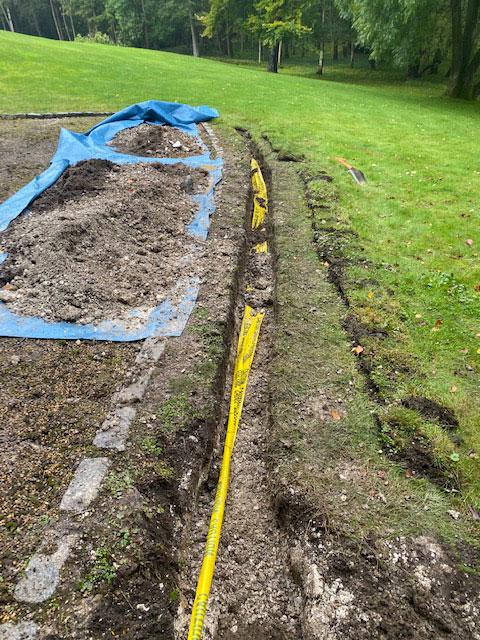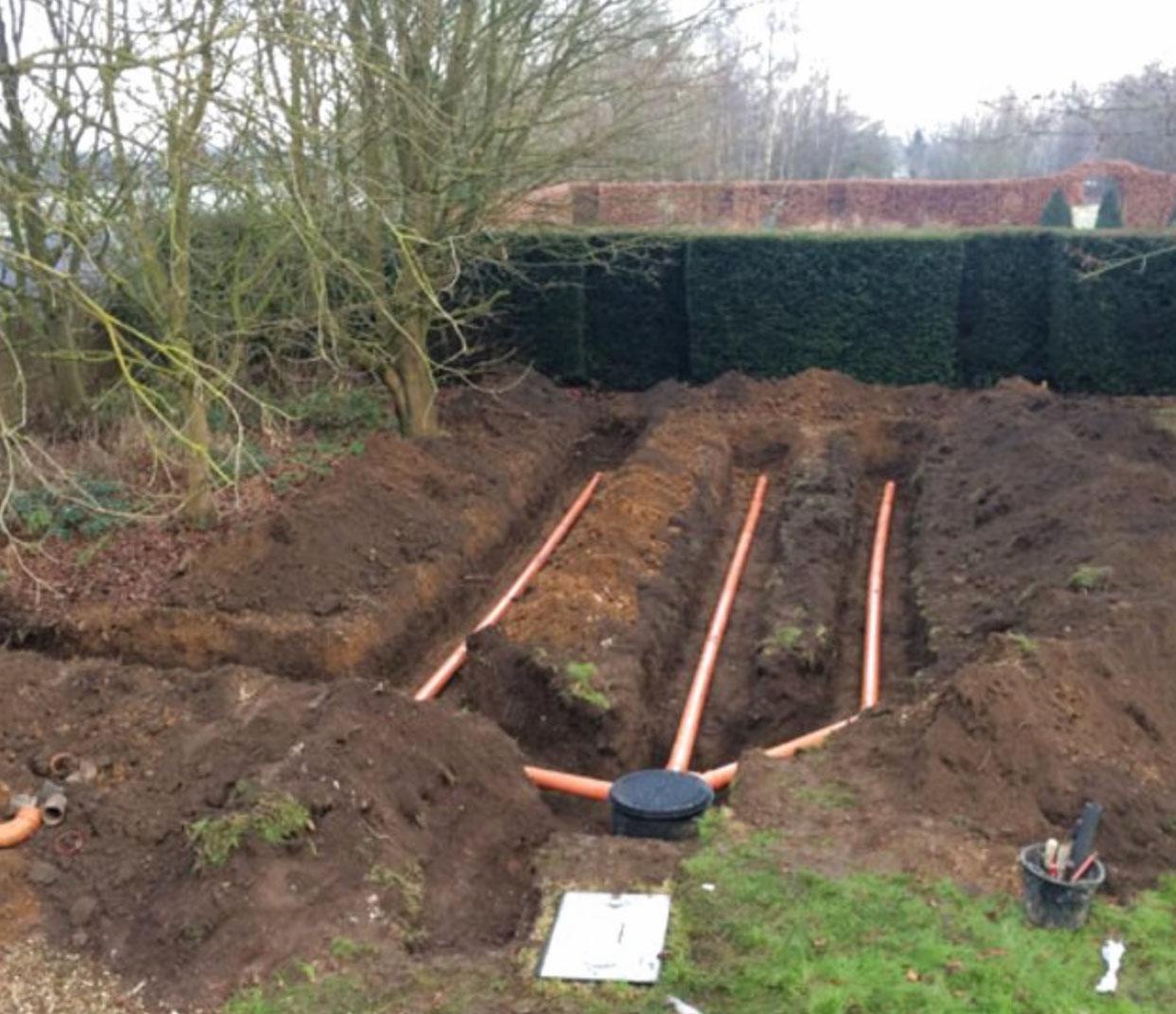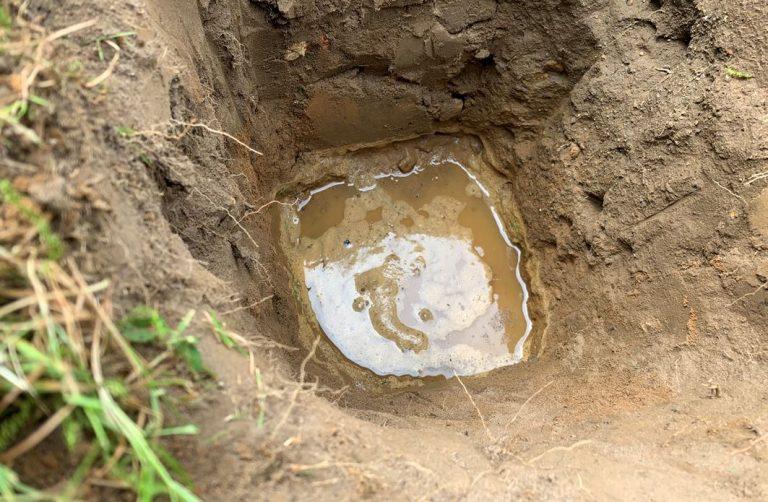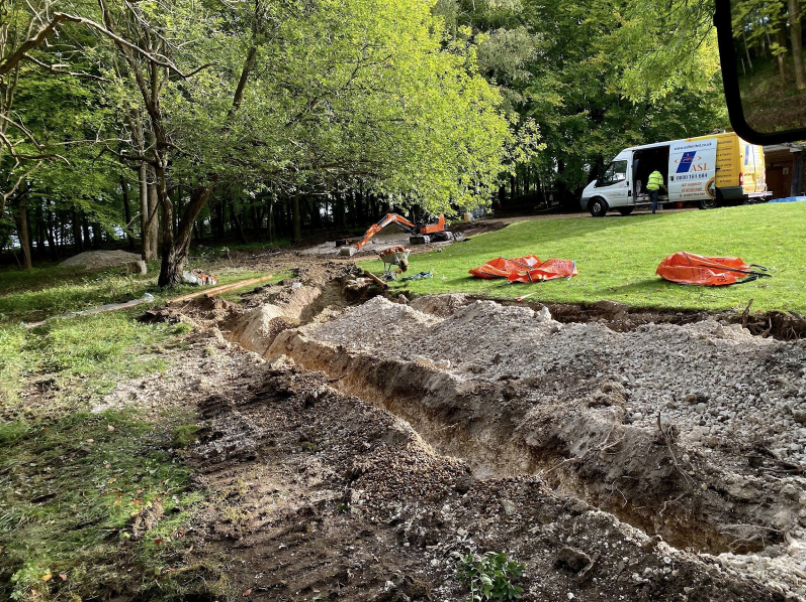What is a septic tank drianage field, soakaway or land drain?

A soakaway is the drainage system used to discharge wastewater from a private sewage system like a septic tank or domestic treatment plant. In this case, we are referring to a drainage field, also known as a land drain. Our experienced engineers can fix any problem you might see with your septic system.
Please note: The term ‘soakaway’ is an umbrella term for any type of infiltration system discharging water to the ground. (Anywhere that water can soak away).
A septic tank and treatment plant must use a drainage field type of soakaway, where the water discharges through a series of perforated pipes that allow the wastewater to filter into lightly aerated soil. A surface water soakaway – dispersing rainwater – can be a pit filled with rubble or crates because the filtration treatment is not required.
The Environmental Agency does not usually allow soakaway pits, boreholes or deep excavations filled with rubble for use with sewage treatment. If you want something like this, you must apply for a permit.
If you have found that your septic tank or drainage field is blocked, needs repairing, or even needs replacing, get in touch with us on 0800 181 384 today.
We will be happy to provide you with the drainage system your property needs, and our engineers (or engineer) can be with you as soon as you need them to carry out the work.
What is a septic tank drainage field, and how does one work?
A septic tank drainage field (often called land drains) is the infiltration part of the treatment system where wastewater filters into the ground. The filtration into the soil can further remove contaminants and impurities. The wastewater flows through each chamber of your system and the separation process. It will then leave the septic tank's final chamber via pipework leading to the drainage fields.
The most significant change to the General Binding Rules, in this case, stated that all septic tanks must not drain to surface water such as a ditch, stream, river or another watercourse. Instead, they must discharge to a drainage field.

This is why it is stated that septic tanks should have drainage fields in the new regulations or be upgraded to or replaced by a sewage treatment plant. Septic tanks that discharge into watercourses or ditches are likely to pollute the environment and must be replaced with a treatment plant after a search has been carried out to ensure no main drains are within 30 metres.
Septic tank drainage fields usually consist of long trenches containing perforated pipes and gravel underneath a lawn. The septic tank itself is only part of the treatment process. The drainage field will complete the system.
Installing a drainage field for a septic tank
We pride ourselves on providing any service our customers need for their septic systems, from unblocking a septic tank drainage field to repairing or replacing the tank. Below, we have listed some of the conditions required to install or replace a septic tank and to build a drainage field for a septic tank:
- A percolation test must be carried out to determine the soil’s suitability.
- The septic tank must discharge into the ground via a drainage field.
- Drainage fields can only be used where the soil conditions are suitable; clay soil is not appropriate for drainage fields.
- Building Regulations must be checked to reference boundaries.
- The Environment Agency’s Groundwater Protection Zone range must be checked.
- They must be able to meet the general binding rules which you can check in detail here.
Testing suitability

When we test your soil's suitability for a septic tank drainage field, we start with a percolation test (conducted over two days).
The ground needs to be porous. This test determines the infiltration rate into the ground by measuring how long it takes water to go down in a saturated hole. The time it takes measures the suitability of the soil. Upon receiving the results, we can work out the calculations which tell our engineer how large the drainage field needs to be.
Ground prone to flooding will not be suitable for drainage fields for a septic tank. Areas that are always damp do not fair well because no secondary treatment will occur. This is particularly common in textures such as clay.
Common soils such as chalk, which can drain too quickly, must have their septic tank drainage fields designed and spread out so that the infiltration system works properly. On occasion, it may also be necessary to upgrade to a sewage treatment plant because they can discharge to surface water.
The percolation test results will determine the viability of a drainage field. This, combined with the size of your system – which is determined by how many bedrooms there are on your property – will dictate the size of the drainage field required.
Rules for new and existing discharges

If your system was installed and discharging effluent before December 31, 2014, your system is known as an “existing discharge”, while any system installed and running on or after January 1, 2015, is known as a “new discharge”. There are some rules that apply to all discharges and some that only relate to new discharges. All discharges can no longer go to a watercourse. Whereas a there are other rules that additionally apply to new dishcarges. Please see the general binding rules for full details on which rules apply.
If you are buying or selling a property, it's strongly advised you arrange to have a home buyer's survey.
You must use the correct sewage system for your case, either a septic tank or a small sewage treatment plant, to treat all sewage before discharging the effluent to the ground via a drainage field.
The difference between a septic tank and a sewage treatment plant is that the treatment plant uses electrical and mechanical parts to treat the liquid to a higher standard. In contrast, the septic tank has filtration systems which filter out solid effluents from wastewater.
You can visit our articles on septic tanks and sewage treatment plants for more information.
You cannot use a rainwater soakaway, well or borehole to discharge effluent to the ground. Instead, to meet the Binding Rules, you should upgrade what you have to a drainage field or apply for a permit so that the Environment Agency can assess the risks of using your current system.
We service septic tanks and soakaways.
At ASL Limited, we have many years of experience in all aspects of septic tanks and drainage fields. If you need advice or wish to discuss your requirements, give us a call on 0800 181 384, and we’ll be happy to help.

